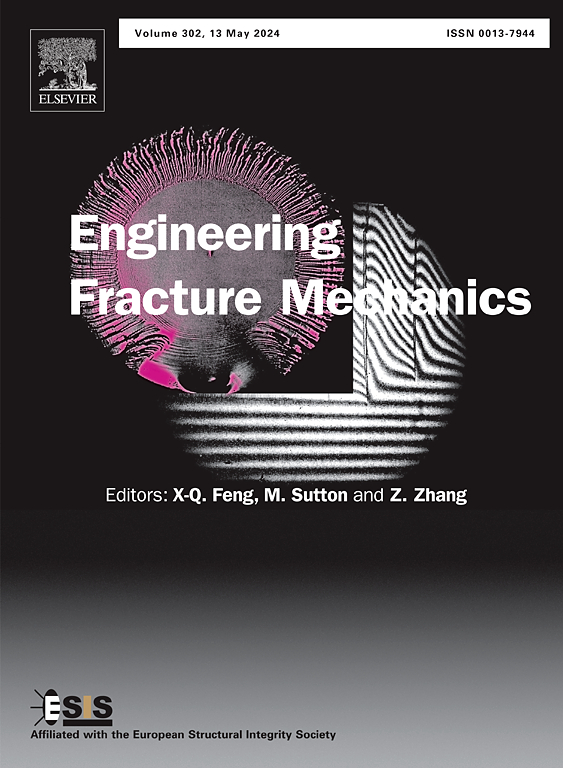Evaluation of heat flux intensity factor for a V-notched structure by the isogeometric boundary element method
IF 4.7
2区 工程技术
Q1 MECHANICS
引用次数: 0
Abstract
The conventional boundary element method using piecewise polynomial interpolation cannot accurately simulate the singular heat flux field around the vertex of the V-notch. Herein, the singularity eigen-analysis combined with the isogeometric boundary element method is proposed to calculate the singular heat flux field. The V-notched structure is divided into two parts, in which one is the heat flux singularity sector near the vertex and the other is the remained structure without heat flux singularity. In the singularity sector, the asymptotic expansion of the heat flux is introduced to transform the heat conduction governing equation into ordinary differential eigen equation, from which the singularity orders and eigen angular functions can be determined, except for the amplitude coefficients in the asymptotic expansion. The boundary integral equations for the heat conduction analysis established on the remained structure are discretized by the non-uniform rational B-spline (NURBS) elements. The amplitude coefficients, which are corresponding to the heat flux intensity factors, can be yielded by coupling the isogeometric boundary integral equations with the singularity asymptotic expansion analysis. A coordinate system transformation method is then proposed to transform the heat conduction governing equations of orthotropic and anisotropic material into the one of the isotropic material, and the heat flux intensity factors are approved to be invariable before and after coordinate transformation. Since the NURBS elements are used, fewer elements are required to evaluate the heat flux intensity factors compared with the conventional boundary element method.
求助全文
约1分钟内获得全文
求助全文
来源期刊
CiteScore
8.70
自引率
13.00%
发文量
606
审稿时长
74 days
期刊介绍:
EFM covers a broad range of topics in fracture mechanics to be of interest and use to both researchers and practitioners. Contributions are welcome which address the fracture behavior of conventional engineering material systems as well as newly emerging material systems. Contributions on developments in the areas of mechanics and materials science strongly related to fracture mechanics are also welcome. Papers on fatigue are welcome if they treat the fatigue process using the methods of fracture mechanics.

 求助内容:
求助内容: 应助结果提醒方式:
应助结果提醒方式:


